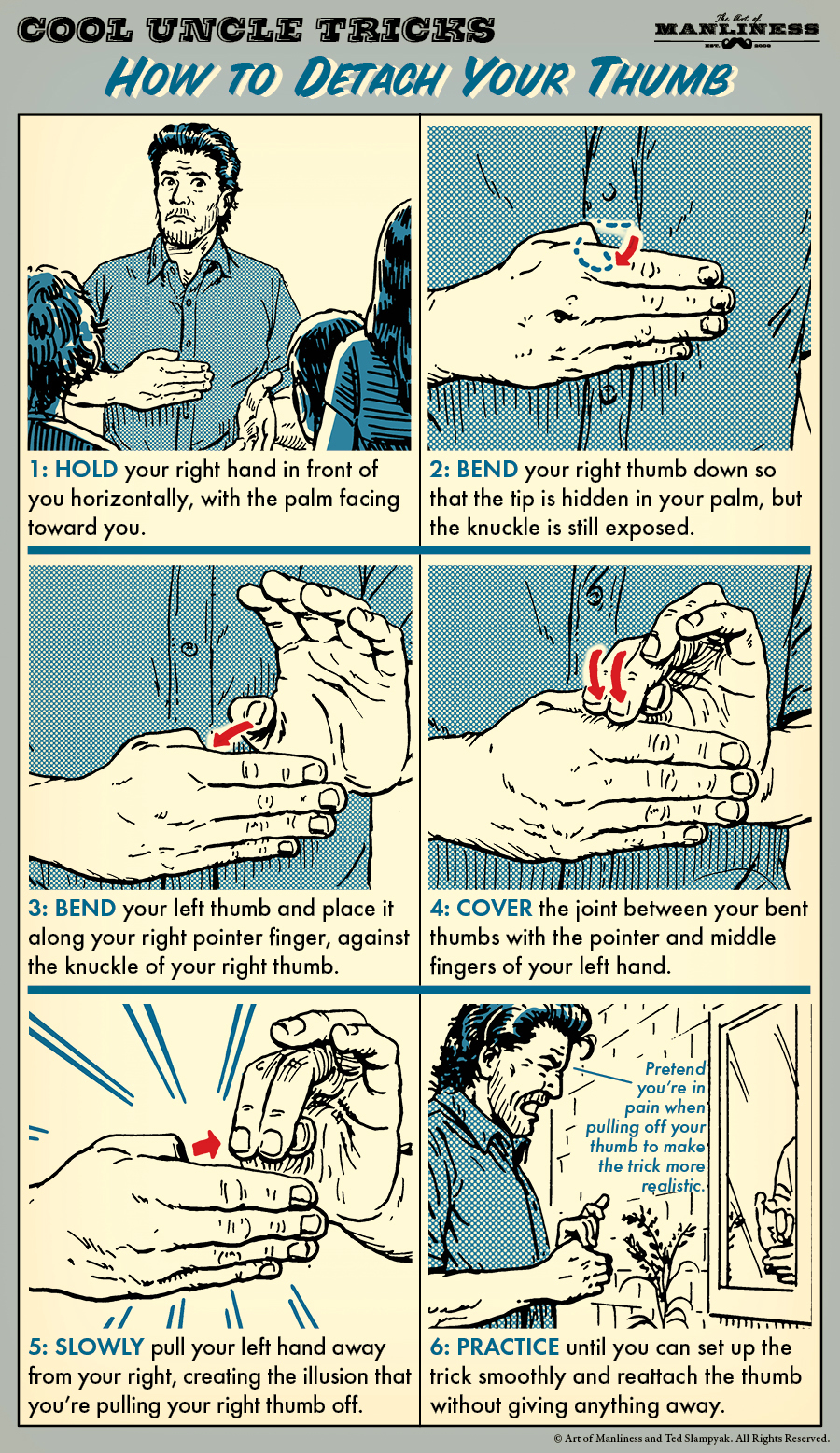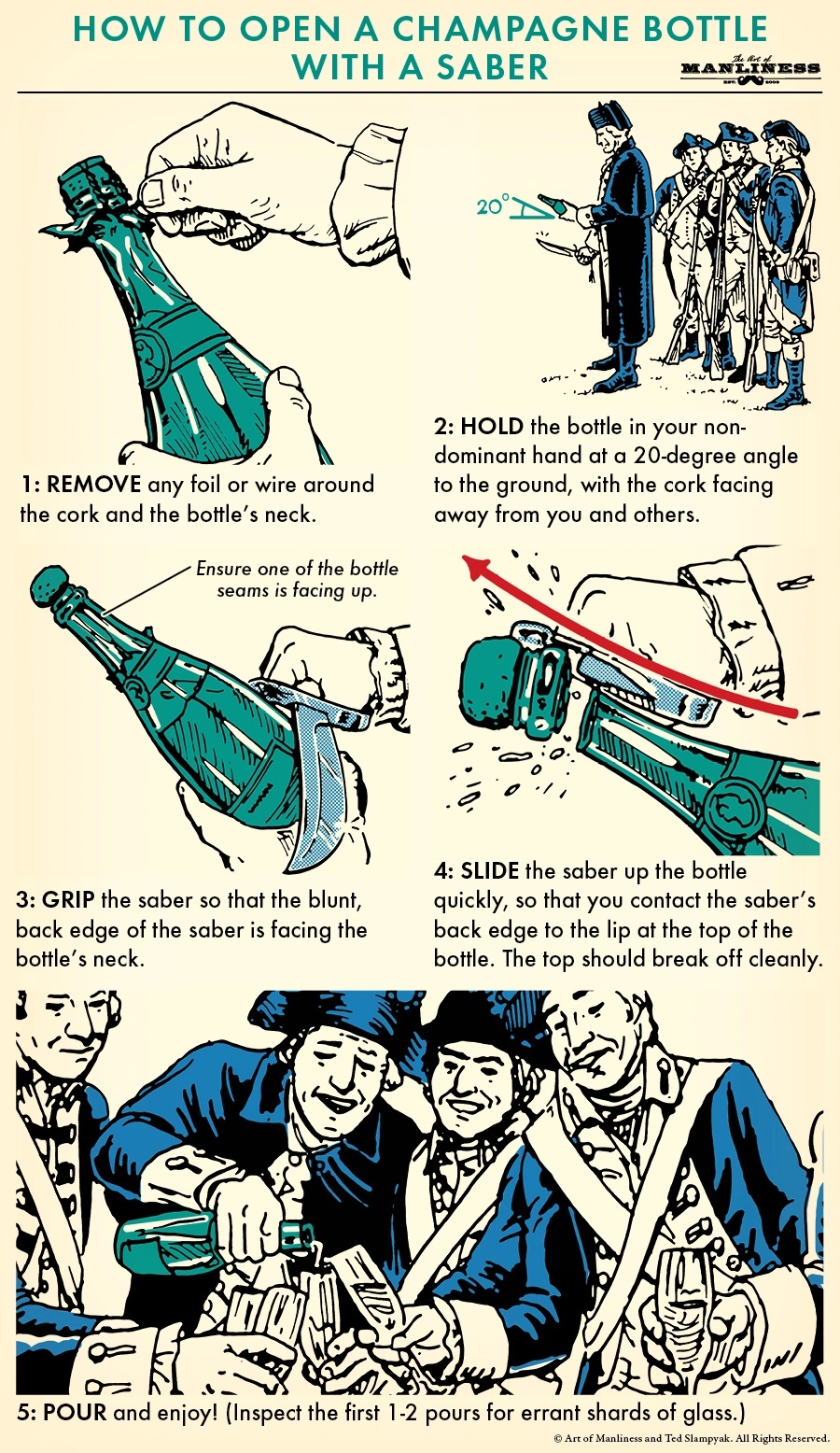 |
For the last few years, manual transmission vehicles have represented only about 4% of annual auto sales in the US. But this is a skill every man still ought to know. (And yes European readers, we know that this is how everyone on your continent does it. We know.)
I can still remember the day I learned how to drive a stick shift. My dad and I were looking for a car for my sixteenth birthday. I had my eye on a red Isuzu Hombre (that’s right, the make of my first car was the Spanish word for “Man”). Only problem? It had a manual transmission, and I only knew how to drive an automatic.
“Not a problem,” my dad said.
He got the keys from the salesman and we went for a test drive. My dad pulled into a cemetery that had a big, empty road that winded throughout the grounds. He stopped the car, turned it off, and got out.
“Okay, Brett-os. Your turn.”
So began my initiation into the high art of stick shift driving.
I stalled out the first time I tried to get the car started. Then the second time. And then a third time. My dad just sat there and chuckled silently to himself, while offering some fatherly pointers. Finally, on the fourth attempt, I got the little truck going. When my dad saw that I could stop and start the Hombre consistently and shift gears without grinding the clutch, he gave the okay for me to get the truck. And off I went, lurching into my new freedom.
It’s been over a decade since I first learned how to drive stick, and I’m still cruising America’s highways and byways the very same way. But the number of my gear-shifting brethren are few; after Oldsmobile introduced the first automatic transmission in 1940, the number of manual transmission vehicles on the road took a steep dive, and for the last few years have represented only about 4% of annual auto sales in the US. (Interestingly, in the first quarter of 2012, sales of manuals jumped up 3%, perhaps signaling a small comeback). While our numbers may be few, there are several reasons you should consider joining our ranks.
You never know when you’ll need to know how. Has your friend become inebriated and you need to drive him and his old Ford “three on tree” Bronco home? Do you need to borrow a friend’s car, and the only one available has a manual transmission? What about renting a car while abroad? Manual transmission cars are much more common internationally than in the US, so automatics are not always available, and if they are, are much more expensive.
Knowing how to drive stick means you’ll never be caught flat, clutch-shy-footed, in a pinch. A man who knows how to drive a standard transmission car can also easily drive an automatic, but the reverse isn’t true. Better to know it and not need it, than need it and not know it.
Manual transmission cars are generally less expensive than automatics. Because very few people today know how to drive a stick shift, the demand for them is low. This can be annoying if you’re looking for a specific model of car with a manual transmission and it isn’t offered. But the upside is that manual transmission vehicles are often priced lower than their automatic counterparts, and the lackluster demand for them can be a bargaining chip when you’re buying used. They tend to sit on the lot longer, so tell the salesman you’d be more than happy to take that lonely manual off their hands if they’ll drop the price some more.
So you don’t hop into a “borrowed” getaway car you can’t drive. Because a manual transmission can act as a possible thief deterrent.
Manual transmission vehicles generally get better gas mileage. Not only will knowing how to drive a standard save you money when you purchase your car, it can also save you money for years after, as they typically get better gas mileage than their automatic cousins. While it’s true that recent automatics have closed this gap, and a few models can even beat their manual counterparts, manuals still have the edge; Consumer Reports found that, on average, a stick shift can improve gas mileage by 2 to 5 miles per gallon. With gas prices as high as they are, every little bit of savings helps.
You can sometimes push start a manual transmission car with a dead battery. If you have a dead battery, but no jumper cables, you can often get cars with a manual transmission, particularly older models, going with the good ol’ push start.
Some really cool cars only come with a manual transmission. If you ever decide to buy a vintage sports car and fix it up, knowing how to drive stick will greatly expand your selection of vehicles. And if you ever win a contest where the prize is an Aston Martin V12 Vantage or a Ford Shelby GT500, you better know how to drive stick. Those cars only come with manual transmissions, and there are countless other high-end and luxury sports cars that are standard transmission only too. Why? Because guys who are willing to drop some serious coin on such vehicles tend to want the full driving experience, which is to say…
Driving stick is simply more fun! If you’ve only driven with an automatic transmission your entire life, you don’t know the fun you’ve been missing. Driving an automatic feels passive and artificial – like you’re merely pointing or steering the car instead of controlling it. With a manual, you actually feel like you’re part of the car, and you’re attuned to its vibrations and noises. Plus, manual transmissions are proactiveinstead of reactive – you get into the gear you need instead of waiting for the automatic tranny to hunt for the right one.
Sure, this fun factor is dampened if you do most of your driving in stop-and-go traffic, or in a city with ginormous hills. But once they go manual, a lot of guys never go back, because automatics seem like a snoozefest in comparison.
Whether you’re a prisoner looking to make a daring escape or a tourist trying to flee from a burning hotel, tying bedsheets together is a perfectly viable way to make a makeshift rope. It’s also a good reason to always buy high-quality sheets, as higher thread counts mean higher tensile strength, which leads to a stronger bedsheet rope.
From The Art Of Manliness:Tying bedsheets together to make a viable rope seems like the sort of thing reserved for cartoons and action movies. But time and again it’s been proven to be a very real way to escape from multi-story buildings. A few days before Christmas in 2012, two inmates in a Chicago prison escaped their 17th-story cells by tying bedsheets together. A few years later, a prisoner in a maximum security prison in Australia used his sheets to scale exterior walls and escape. And if you think this tactic is reserved for desperate criminal masterminds, think again. On a warm summer night in Virginia in August of 2017, a 78-year-old woman escaped the flames engulfing her apartment by, you guessed it, tying her sheets together.
|

From The Art Of Manliness:While almost any way you bust open a bubbly bottle of champagne is exciting, it’s made even more so by using a saber for the task. The art of sabrage may date from the Napoleonic era, when military officers and perhaps The Little Corporal himself, celebrated victories by opening champagne bottles with martial style. The biggest misconception about using a saber, or sword, to open a bottle of champagne is that you are literally cutting the top of the bottle off. In fact, the saber strikes the glass in such a way that it cracks and the high pressure inside the bottle takes care of the rest. If you don’t have an official champagne saber, or an awesome sword, a heavy kitchen knife will do (but will look significantly less awesome). A couple things Alton Brown suggests keeping in mind in order to make this celebratory feat both successful and safe: First, make sure the champagne bottle is chilled. It should be anyway, but it ensures the glass is more easily breakable. Second, while all true champagne is technically French, you want to make sure of its pedigree, as they tend to use thicker bottles, which also makes for a cleaner break. En garde! And drink up!
|
How to Unclog a Toilet Like a PlumberLearn to stop the chaos and fix the situation with a few handy tips and tricks of the trade, including plunger techniques and a secret solution. From The Art of Manliness:Toilet clogs come in a couple varieties. Sometimes kids take toys and other household items for a dip in the porcelain pool. Oftentimes, though, it’s the adult members of the household who clog the loo with deposits of organic matter. Either way, these blockages put your commode out of commission and can also wreak havoc if overflowing water begins to spill into your bathroom. Learn to stop the chaos and fix the situation with a few handy tips and tricks of the trade. Start with a plunger, add in a secret concoction, and deal the final blow with an auger if necessary, and you’ll be able to mount your ivory throne once more.
|